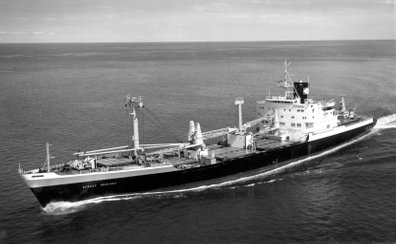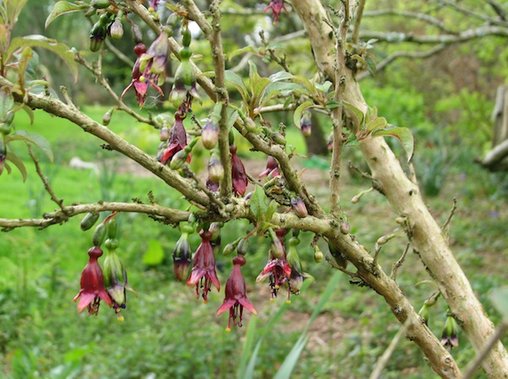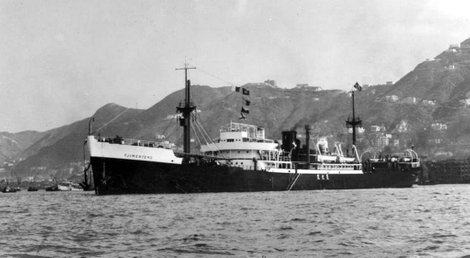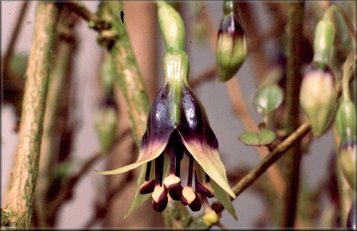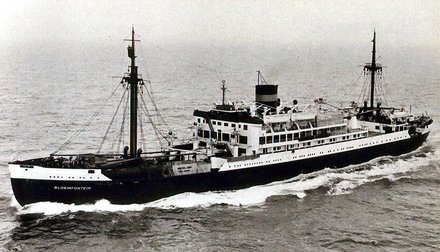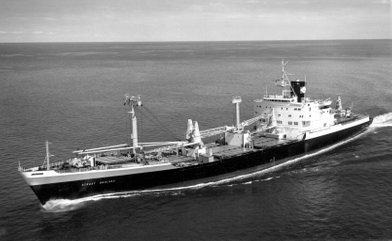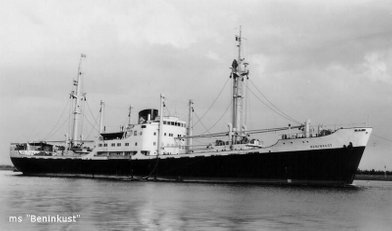Jan de Boer
Born 1935 ~ Passed Away 2022
As a human being a highly esteemed colleague hybridizer, a true full-fledger who does not shy away from the difficulties in hybridizing.
Although some of his novelties are not sufficiently good for the average fancier, he has done a lot of work in the field of winter hardiness.
H.J. de Graaff mei 2016
Fuchsia’s and sail !
The fuchsia hobby in Jan de Boer's life can be compared to a small peat fire, which arose during his younger years that continued to smolder underground during the many years in which Jan de Boer sailed all the seas of the world as a seaman.
It was only after his retirement that the peat fire surfaced again and turned into a true explosion of fuchsia with Jan de Boer.
ms. Straat Agulhas
Jan de Boer was born in the village of Jisp in De Beemster. As a farmer's son Jan got the affinity with nature from home. As a child, he already cultivated vegetables in the garden of his parents in De Wijde Polder, also in the Beemster. Food plants were given priority in those war years. Later in the war, the garden was turned into a flower garden.
As a child, Jan has already become acquainted with Fuchsias. That was in Amsterdam in Artis. The large standerds, which he had to look up to as a child, inspired him then and from an aunt he got a fuchsia that was hardy. That was the first fuchsia where Jan let go of his hybridizing skills. And that aunt was later one of the first members of the NKvF.
After the necessary nautical training at the Kweekschool voor de Scheepvaart in Amsterdam, Jan was sailing as a pilot's student and it turns out that, if you were raised as a farmer's son with nature, this is something that will be in your genes. Jan went through the various ranks aboard the ships and eventually climbed up to captain. On his travels Jan always had plants on board also fuchsias which you can call special because Jan soon discovered that sailors have nothing but plants with nothing. It sometimes happened that due to circumstances he could not fit his plants for a while, but he did not have to count on any cooperation from his colleagues, because they did not look at it so that when Jan came back he would find his plants as drily desiccated shrubs. .
In 1961, long before there were any organized fuchsias in the Netherlands, Jan made another acquaintance with fuchsias on one of his trips to New Zealand.
The ships on which Jan sailed mainly transported loose cargo that had to be secured in the hold of the ship, and also had to be manually unloaded again, which involved a great deal of time. They had never heard of container ships at that time.
This laborious method of loading and unloading offered the crew of such a ship the opportunity to visit the ports and the surrounding area.
F. excorticata
In 1961, during a longer stay in the harbor of Lyttelton on the southern island of New Zealand, he saw fuchsias growing wild in the hilly landscape he visited.
Fuchsia procumbens, Fuchsia excorticata (those huge trees standing in the water of more than 10 meters high, with enormous thick trunks) and Fuchsia presscandens in erratic bushes against the mountain slopes of which in the winter only dry bushes were left in the spring .
A fuchsia association did not exist in the Netherlands yet and there were not many fuchsia books either, and these were very limited in terms of content. How did Jan know then what F. procumbens, F. perscandens and
F. excorticata was? The locals will not have told him and he would not have become wiser. In the Maoris, as the original population of New Zealand is called, F. excorticata, for example, was called Kötukutuku tree.
Neck
No, it was just the peat fire that smothered underground and Jan kept his interest in Fuchsias warm. Wherever he got the time and opportunity during the visit of his ship to the harbors, Jan tried to visit the botanical gardens if they were in the neighborhood like in Singapore, Hong Kong and in Sri Lanka the botanical garden of Kandy.
It was in that botanical garden that Jan saw the three New Zealand species for the first time, of course with the names. And that was in 1955 when he was 20 years old.
It is therefore understandable that Jan, when traveling to New Zealand in 1961, not only went looking for that species but also named it. All in all, it was the knowledge and information Jan had gained, not to mention the memory of these botanical fuchsias, which started to play a major role in his hybridizing work decades later after his retirement home in the Netherlands.
Tjimenteng
In the intervening period in 1992, during the scarce days of leave, the fire was kept going by visits to his aunt who had built up a small collection of fuchsias. So he got from her a triphylla hybrid 'Göttingen' a plant that was demonstrably from before 1930. Jan stabbed him and took him to the sea.
ms. Tjimenteng
In the garden in the house in De Beemster the fuchsias grow in pots and they had to go inside in the winter, which was quite a drag. Not to speak of lack of space. They stood next to the bed in the bedroom.
At that time there were only a few winter hardy fuchsias that were suitable for our climate, while even then there was a need for it. In the meantime, Jan was still just captain on the large canal and he dragged the plants he wanted to bring with him to the ship. Then in 1984 he came to the idea that he wanted to focus primarily hybridizing with botanical fuchsias and to bring the hardy aspect into fuchsias. He did succeed but he did it on his own initiative and that is why there were plants that were less interesting.
The hybridizing of fuchsias was still in its infancy in those years but in the beginning of the 80's suddenly experienced a huge revival. After his retirement in 1992 the peat fire at Jan flared up once again and that resulted more or less in a fanatical hybridizing drift with fuchsias. A few years later, he and his wife Rie were able to buy a beautiful farm with a large garden in Blesdijke where space was enough for the hybridizing activities of Jan.
Straat Moji
In all those years Jan, as a self-made hybridizer, had gained a lot of experience, but contacts with like-minded people now made it possible to gain even more insight into his hybridizing work. In 1992 Jan became a member of the NKvF and as a result, many doors were opened for Jan in order to meet his inexhaustible urge to acquire knowledge. In practically all sections of the association Jan functioned: general board of the NKvF, board of the Friesland region, the computer determination group, the hybridizing group and the botanical group.
In short, now that he had more free time at his disposal, Jan took the opportunity to supplement his already acquired knowledge with the experiences of others in order to be able to realize his ideals in the field of hybridizing.
Hybridizing.
Winter hardy fuchsias and preferably ground-covering fuchsias that was what Jan wanted to have in the garden around his house. And of course the three New Zealand species F. procumbens, F. perscandens and
F. excorticata should also not be missing from his collection to be able to serve as a parent plant.
F. perscandens
F. procumbens was a different story. Already in 1984 he began intensive hybridizing of fuchsias with the aim of obtaining more fuchsias with hardy properties. According to Jan, that worked out nicely but in retrospect, Jan said he had lost many beautiful plants because he always put every seedling in the garden, no matter how beautiful he liked it, to let him overwinter there or not, so that by far the most plants would be the first winter did not survive.
From F. presscandens Jan managed to grow pretty nice plants that he could use in his hybridizing work.
F. excorticata soon turned out to be a plant that is uncomfortable in our climate and nearly dies almost every year and then runs out again in the spring. But Jan managed to keep him busy and in 1998 he even managed to use him as a parent plant.
F. procumbens
In total, Jan de Boer has grown 63 new cultivars for enthusiasts. For this he used 26 different botanical fuchsias that were used both as a seed or as a pollen producer. Furthermore, 19 different cultivars of fellow hybridizers were used, the majority of which also have many botanical fuchsias in their pedigree, which brings the percentage of botanical fuchsias in the pedigree of the plants of Jan de Boer to a very high percentage. This explains why the cultivars of Jan show a lot of variation in growth and flowering.Every hybridizer who is really serious knows that if one starts from Botanical fuchsias one is innovating. He also used 10 of his own creations as a parent plant that also increased the proportion of botanical fuchsia in the pedigree several times. We will explain the use of the three botanical parent plants that Jan has already enrolled in his younger years.
~ * ~
F. procumbens.
He used Fuchsia procumbens because he wanted to have ground cover plants at the time. And a winter-hardy yellow tulip flower was also one of the wishes he dreamed of. When he had realized a few plants that had not been produced with the help of F. procumbens, he was not really happy with it because the flowers were always on the ground and blemishes etc.
So all energy and attention was focused on hybridizing with F. procumbens. Colleague hybridizers had already warned that F. procumbens was not the plant that could do a lot with hybridizing and that Jan also discovered. Fertility often failed, the climatic conditions were often also a breaker and flowers often failed to fertilize when opened by their own pollen. Persistent that he was Jan understood that his efforts could only succeed by having access to many plants and doing a lot of pollination.
In the beginning, Jan needed about 60 F. procumbens plants for that and later on about 90 were. With this he has carried out a total of around 4,000 pollinations. As a fertilizer, many cultivars were first used and two species and in the last two thousand about half of them were pollinated with pollen from F. decussata. Not only the pollination and harvesting of the berries must have been an enormous job, but also the sowing, transplanting and growing of the young delicate plants have required a lot of perseverance and time.
The final result of all those efforts was one new cultivar 'Straat Malakka' (F. procumbens x F. decussata).
Bloemfontein
ms. Bloemfontein
With such a result, many people are readily inclined to think that the one plant that produced it was a lucky one. Nothing is less true. Many fuchsia enthusiasts do not know how much work and effort hybridizers do to create the cultivars that they enjoy in their collections. In the hybridizing group of the NKvF, there was mutual agreement that, given the capriciousness of hybridizing Fuchsia, the crossings had to be made in large numbers in order to achieve the desired result. That is why they also worked with projects such as double orange flowers, white triphylla cultivars and upright flowers.
Several people participated in such a project to increase the success rate but in this case Jan did it all by himself. In total Jan used 8 times F. procumbens as a seed producer and 7 times as a pollen giver.
~ * ~
F. perscandens.
F. perscandens, known as a winter bloomer that blooms on the bare wood and is not exactly an attractive plant in the summer months, was used by Jan because of the special colors and shapes of the flowers that Jan drew early in his life. Despite the fact that it is a winter bloomer, Jan managed to use him twice as a seed in 'Straat Magelhaen' and in 'Straat Sunda' and he was used as a pollengiver 6 times, for example in 'Straat Cumberland', 'Straat Nassau', 'Straat Clement' 'and in' Vechtweelde '.
Jan de Boer
F. excorticata.
A Fuchsia excorticata that grows in nature in New Zealand along brook and streams, reaches a huge height for our fuchsia concepts. It will grow trees up to 15 meters high with a respectable trunk size. The special flower shape, flower colors, the strands of reddish brown bark on the trunks and its imposing size have been that Jan de Boer F. excorticata at the time closed in his heart with the thought that later something to do with it. Unfortunately, F. excorticata in our climate is not easy botanical fuchsia if not the most difficult. Jan also experienced that when he had acquired a young copy.
In the winter it was difficult to survive, usually the plant died completely out of the ground and then ran out again in the spring. Nevertheless, Jan managed to use the plant once as a seed producer, resulting in the cultivar 'Straat Hobart' (F. excorticata x F. splendens).
In the long list of species that Jan de Boer all used for his hybridizing work, it is striking that he did not shy away from difficulties and regularly made crossings of species from different sections which is often a matter of angelic patience. 'Straat Torres' for example of which F. triphylla is the seed parent and
F. procumbens the pollen parent. Another example is the cultivar 'Rijs 2001', which is also a cross between two species from two different sections: F. obconica from the section Encliandra and F. splendens from the section Elobium.
He really did not shy away from difficult things and easy species such as F. fulgens and F. magellanica and for example 'Grandiflora' were hardly used by Jan. On the other hand, much use was made of small-flowered species from the Encliandra section, often using a species from another section, for example F. splendens.
Molenkerk
This is what you call the real hybridizing work that has been preached for years in the hybridizing group.
Often such crossings do not produce the desired results because many sterile plants are formed or plants that are hardly fertile and with which it is difficult to embroider further.
But if you are naturally a go-getter like Jan de Boer, you are sometimes lucky that there is a usable copy in between.
hybridizing on a large scale as Jan did, so making a lot of the same pollination, means that you expect from nature that it does not always fulfill your wishes. But there was once a year in which nature opposed Jan in a very strange way. If Jan made much the same pollination then Jan had the habit of attaching colored threads of wool to the branches of which he had pollinated the flowers. You could think of a simple solution, in this way you knew exactly which ripe berries you had to harvest and the color you could see which pollination it was. But at one point it struck Jan that there were fewer and fewer blue threads on his plants and almost everything disappeared except for one plant.
The riddle was solved when Jan kept an eye on this last plant and saw that a sparrow took the thread to his nest in the garage.
An inspection of the nest taught that this sparrow apparently had a preference for blue wool with which he dressed his nest.
A nice success was the cultivar 'Yellow Heart' that originated from the very special crossing of
F. procumbens and F. apetala. But it was not yet the ultimate what Jan wished the yellow hardy rose flower. Since Jan often saves several specimens when selecting the seedlings that do not fully meet his strict requirements, but may still be used for further hybridizing work, he may still be able to realize his dream.
All the plants that Jan introduces must meet the strict requirements that he sets before he takes them to the inspection, are resistant to diseases and pests is one of the things that Jan pays attention to and winter hardiness. Jan tests almost all of his new cultivars for winter hardiness. Often this is not the case because of the exotic crossings but you never know. The assessment of fellow hybridizers also allows Jan to consider whether or not to offer the plants for inspection. And it was important to have it inspected by the VKC in Aalsmeer and later by the BCK of the NKvF.
All cultivars of Jan are also registered with the AFS.
Naming.
Naturally, Jan named some plants to relatives and good acquaintances, and to a large fuchsiashow of the Friesland region of the NKvF of which Jan is a member: 'Rijs 2001'. But the vast majority of his plants have a topographical kennel name such as 'Straat Malakka' and 'Straat Cumberland'.
A nice way for a sailor to name his new cultivars for all the seas he sailed. At least you would think that, but that was not Jan's intention.
He named the ships on which he sailed and who carried these names.
Jan has also named in his cultivars a few ships where Jan has sailed on who have a different name. The overview of his plants indicates which plants are named after one of Jan's ships.
Straat Sparks
Some names starting with Straat are fantasy names. This was done because there were no more ships on which Jan had sailed whose names started with Straat and Jan orderly as he is, all the new fuchsias that New Zealand species used to use for the kennel name Straat.
Many cultivars of Jan have gained a permanent place in the collections of growers and enthusiasts such as:
'Rijs 2001', 'Taco', 'Siberoet', 'Straat Futami', 'Straat of Plenty', 'Neck' and last but not least 'Bloemfontein'.
But there are also plants of Jan that are less scattered here, that are mainly plants with exclusive and exotic-looking flowers. Because the average fuchsia lover does not know the background knowledge of caring for plants with botanical parents, they are obviously loved, but have often not survived in the collections. The lack of a good culture guide with descriptions of the plants is also responsible for this. On this site we will give (later) extra attention to the descriptions that are placed under the "Worldwide Fuchsias" button.
Straat Yucatan
Thanks to his contacts with fellow hybridizers and his friendship with the English colleague Edwin Goulding, Jan's cultivars are also popular abroad. Oddly enough, many cultivars are still in circulation that you hardly encounter here anymore. This is especially the case in England.
A search about the worldwide web tells us that in all corners of the world the cultivars of Jan de Boer can be found; Russia, Japan, America, Norway and Australia just to name a few.
Oddly enough, they can not be found in the country where his passion was largely born, New Zealand.
Sigrid van Schaik and Martien Soeters.
Select very strict and ask for advice from other hybridizers or people who know about it, and throw away all bad plants.
Do not distribute plants to family or friends before they have been given a name at the inspection, are offered or registered with the AFS.
And have a lot of patience and waiting for that one good, exceptional fuchsia that are the most important commandments for a (novice) hybridizer.
Jan de Boer june 2016.
Below are cultivars of Jan de Boer ranked on the year in which they were introduced. The cultivars indicate which ships they have been named to, and where Jan has sailed.
From the Cultivars marked with a *, you can find a picture under the button
" Photos".
Do you have photos and you want to share them with me, you can send the photo via the e-mail address below.
sigrid@vanschaik.nu
~1995~
Straat Malakka (schip)
~1996~
Irma
Marjan de Boer*
Straat Magelhaen (schip)
~1997~
Hui Me
Musi (schip)
Straat Napier (schip)
Straat Torres (schip)
Taco*
Tjinegara (schip)*
~1998~
Caitlin Isabelle*
Cornelis Jan Wijnberg*
Straat Algoa (schip)
Straat Cumberland (schip)
Straat Nassau (schip)
Vechtweelde*
~1999~
Straat Cook (schip)*
Straat Fiji (schip)
Straat Florida (schip)
Straat Holland (schip)
~2000~
Camphuys (schip)
Irving Alexander*
Maetsuycker (schip)*
Siberoet (schip)
Straat Clement (schip)
Straat Hobart (schip)*
Straat Soenda (schip)*
~2001~
Rijs 2001*
Straat Agulhas (schip)
~2002~
Straat of Plenty*
~2003~
Straat Accra (schip)
Straat Moji (schip)*
Straat Nagasaki (schip)
~2004~
Orange Heart
Straat Fukuoka(schip)
Straat Futami (schip)*
Straat Kobe(schip)
Straat van Diemen (schip)
~2005~
Elize-Catharina
Molenkerk (schip)*
Straat Gibraltar
Straat La Plata
Straat of Dover
Straat of England
Straat Osaka (schip)
Straat Red Sea
Straat Singapore (schip)
Tjiluwah (schip)
Yellow Heart
MS. Straat Agulhas
ms. Beninkust
~2006~
Annelies Marcus
Beninkust (schip)*
Straat Bali (schip)
Straat Flores (schip)
Straat Lombok (schip)
Straat Messina
~2007~
Bloemfontein (schip)*
Jasper Marnix
Straat Sparks*
Straat Taiwan
~2008~
Straat Yucatan*
~2009~
Neck*
~2014~
Renella*
Tjimenteng (schip)*
~2016~
Elegant Spray
Elize Marcus*
Flower Spray*
Gerda*
Schadow Lover*
Sea Wave*
Spray*
Straat Final*
Straat Timor*
Tidal Wave*
Typhoon Wave*
Yvonne*
~2017~
Balloon Spray*
Dripping Spray*
Freek Wave
Gré*
Niels de Boer
Small Wave*
Sundowner
Tropic Wave*
Whirlpool
~2018~
Caitlin de Boer
Falling Wave
Flower Drizzle
Orange Sunset
Red Wave
Small Shower
Sunny Breeze
Sources: Jan de Boer.
hybridizing archive M. A. Soeters.
Hr. H.J. de Graaff.
Nedlloyd pensioenkrant augustus 2001.
Nederlandse Kring van Fuchsiavrienden.
With thanks to Jan en Hermine Workel.
© Fuchsia’s of the World 2016
~2021~
Colour Ice
Red Sea
Tropic Sea
Tropic Waters
Wild Sea
Photos: Mvr. T. van Schaik.
Mvr S. van Schaik.
Camborne-Redruth Fuchsia Society
Varen is fijner dan je denkt
Hr. Jack Lamb
Hr. T.G. Koerts
